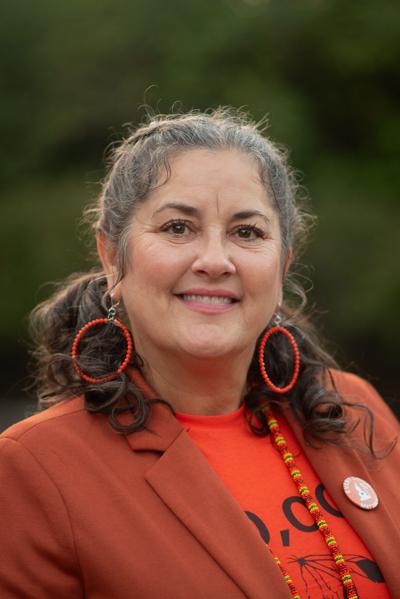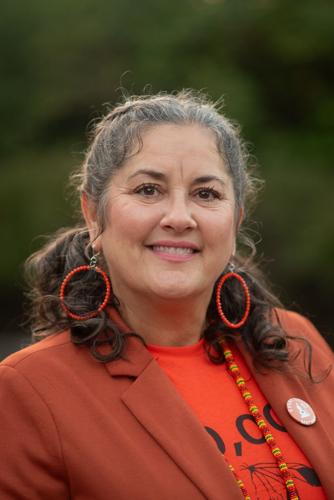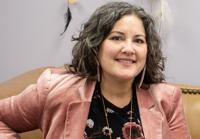As we look to the future, we stand on the cusp of an Indigenous renaissance — a period of revitalization, strength and self-determination that can reshape the landscape of this country for generations to come.
The road to reconciliation has been long and often painful, but what lies ahead offers a promise of healing and resurgence, driven by Indigenous communities reclaiming their rightful place as leaders, healers, and stewards of the land.
This vision is not a dream of assimilation, nor is it one where Indigenous people are dependent on outside systems to thrive. It is a future grounded in the values, traditions and wisdom that have sustained Indigenous nations for millennia. It is a future where Indigenous self-determination is not only respected but celebrated — where Indigenous peoples are the architects of their own destiny, with the resources and infrastructure necessary to support their communities and the nation at large.
At the heart of this future is the creation of services that are not simply imposed upon Indigenous lands but grown from them, reflecting the unique needs and strengths of the people they serve. Imagine a community hub, built on Indigenous land, that serves as a beacon of health, education and opportunity for all stages of life. A place where care is not compartmentalized but seen as a holistic, lifelong commitment to the well-being of the individual, the family and the community.
In this future, health care, child care, elder care and everything in between are not fragmented but integrated into a single, comprehensive system. This health and community centre would offer wraparound care, ensuring that every member of the community is supported from birth through to old age. Indigenous midwives would guide new life into the world, surrounded by family and culture, while elders would receive care that honours their wisdom and contributions to the community. Holistic health services, grounded in both traditional Indigenous knowledge and Western medicine, would ensure that everyone has access to the care they need, when they need it.
Child care services would be embedded in the community centre, with programs that don’t just watch over children but nurture them with the values, languages and stories of their ancestors. From an early age, children would learn their languages, immersed in the songs, teachings and histories that have been passed down for generations. Indigenous language revitalization would be at the core of the curriculum, ensuring that the next generation grows up fluent in their mother tongues, proud of who they are and where they come from.
But this vision goes beyond care for the very young and very old. It extends to the creation of training, recreation and employment opportunities for youth, empowering them to build meaningful futures without leaving their communities behind. In this centre, Indigenous youth would find not just a place to play and learn, but a place to grow. Apprenticeships, vocational training and mentorship programs would be created to ensure that young people can gain the skills and experience needed to succeed in a variety of fields — whether they choose to stay in their communities or take their talents elsewhere.
This future also holds a deep commitment to cultural and language initiatives that reconnect communities with their roots. Cultural programming would be woven into the fabric of daily life, with regular events, workshops and ceremonies that celebrate Indigenous traditions and share them with younger generations. Elders would take their rightful place as teachers and guides, helping to ensure that the knowledge of the past continues to shape the future.
And this future doesn’t stop at cultural revitalization. It recognizes the importance of economic empowerment. Indigenous-led businesses would flourish, supported by training and entrepreneurship programs that encourage innovation, resilience and self-sufficiency. Community-owned enterprises, from sustainable agriculture to tech startups, would generate wealth that stays within the community, creating jobs and opportunities for all.
Recreation would be celebrated as part of the holistic approach to well-being, with sports programs, arts initiatives and outdoor activities designed to promote physical health and mental wellness. Indigenous youth would engage in traditional games alongside contemporary sports, learning teamwork, leadership and resilience through movement and play.
A place like this — a community centre offering comprehensive services across health, education, employment and culture — is not only possible but essential. It is a blueprint for what true reconciliation looks like when driven by Indigenous leadership and vision. It is a model that can be replicated across the country, creating a network of Indigenous-led hubs that foster both individual and collective growth, grounded in the land and the teachings of our ancestors.
In this future, Indigenous communities will no longer be waiting for outside systems to solve problems they were never designed to fix. Instead, they will be leading the charge — shaping solutions that reflect their unique values and needs, supported by a nation that understands the importance of investing in Indigenous determination.
As we move toward this vision, we must commit to the principles of equity and empowerment. This means shifting the power dynamics that have long held Indigenous communities back. It means ensuring that resources, funding and decision-making lie in the hands of those most affected by the outcomes. It means creating space for Indigenous voices, not just as participants in a conversation, but as the leaders of the movement.
The future of reconciliation in Canada will not be marked by token gestures or symbolic acknowledgments. It will be defined by the creation of spaces like these, where Indigenous peoples can heal, grow and thrive on their own terms. The road ahead may not be easy, but the promise of this vision is worth every step.
Together, we can build a future where Indigenous communities are not just surviving but flourishing. A future where the next generation is born into a world where their culture is celebrated, their voices are heard and their potential is limitless. This is the Indigenous renaissance — a new era for Canada, led by the very people who have long been denied their rightful place in its future.
Error! Sorry, there was an error processing your request.
There was a problem with the recaptcha. Please try again.
You may unsubscribe at any time. By signing up, you agree to our and . This site is protected by reCAPTCHA and the Google and apply.
Want more of the latest from us? Sign up for more at our newsletter page.




















